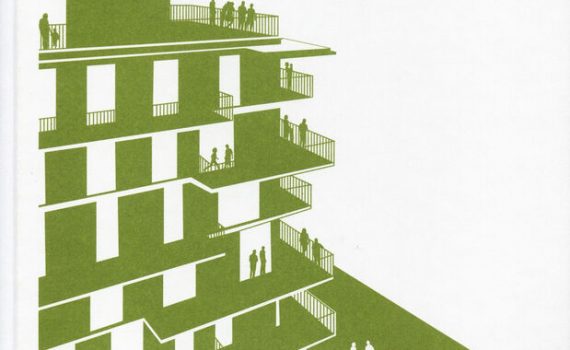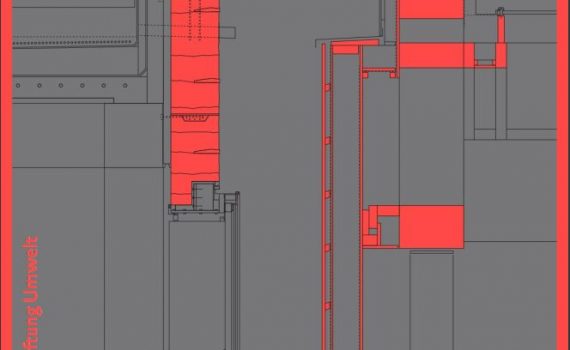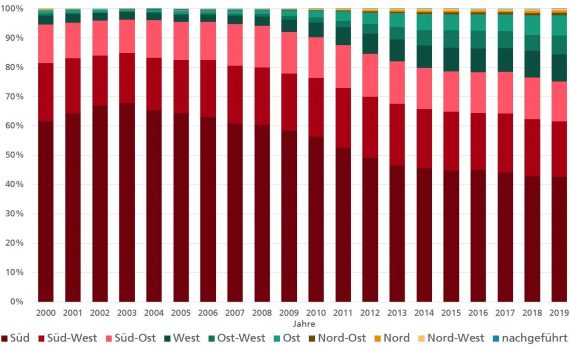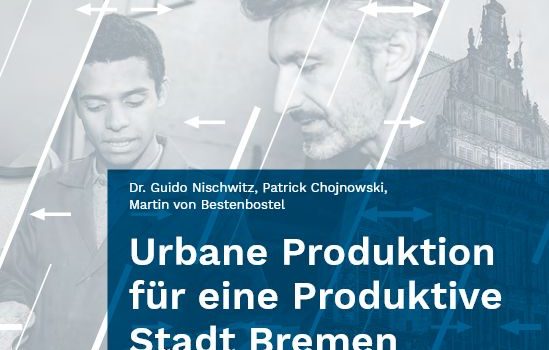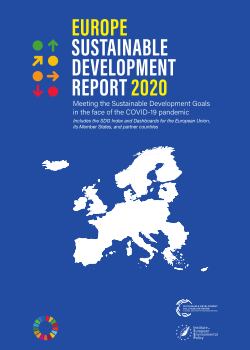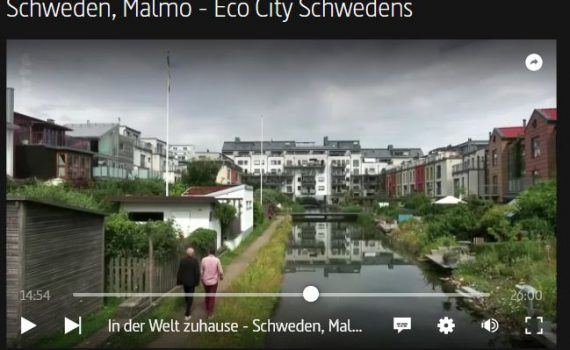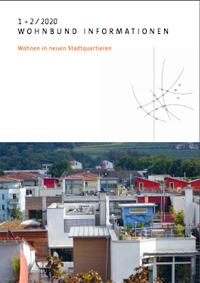 Net public electricity generation reached a record share of 59.7 per cent in 2023. The share of the load was 57.1 per cent. This is the result of an analysis presented today by the Fraunhofer Institute for Solar Energy Systems ISE. New records were set for wind and solar power in 2023. In contrast, generation from lignite (-27 per cent) and hard coal (-35 per cent) fell sharply. Photovoltaics stood out in the expansion of generation capacity: at around 14 gigawatts, the expansion was in double digits for the first time and significantly exceeded the German government's statutory climate protection target.
Net public electricity generation reached a record share of 59.7 per cent in 2023. The share of the load was 57.1 per cent. This is the result of an analysis presented today by the Fraunhofer Institute for Solar Energy Systems ISE. New records were set for wind and solar power in 2023. In contrast, generation from lignite (-27 per cent) and hard coal (-35 per cent) fell sharply. Photovoltaics stood out in the expansion of generation capacity: at around 14 gigawatts, the expansion was in double digits for the first time and significantly exceeded the German government's statutory climate protection target.
Kategorie für Blog: Media
More rail transport, reformed motor vehicle tax and less fossil heating needed
 Germany can still achieve its climate targets by 2030. This is shown in a new analysis by the Federal Environment Agency (UBA). This would require, among other things, more rail transport, a reform of the motor vehicle tax and the restriction of fossil heating. In addition, all emissions would have to be priced and charged to the polluter. In the so-called Climate Protection Instruments Scenario 2030 (KIS-2030), the UBA has examined how additional emissions can be saved in the building, mobility, energy and industry sectors. "The model calculation clearly shows that we have a lot of catching up to do in some sectors," says UBA President Dirk Messner. "We now urgently need a constructive dialogue about where emissions can be reduced, otherwise we will miss the legal savings targets. We also need to talk honestly about how to cushion the financial burden on lower-income groups and distribute it more fairly. Currently, low-income households are often asked to pay disproportionately. Understandably, this does not exactly increase acceptance for more climate protection.
Germany can still achieve its climate targets by 2030. This is shown in a new analysis by the Federal Environment Agency (UBA). This would require, among other things, more rail transport, a reform of the motor vehicle tax and the restriction of fossil heating. In addition, all emissions would have to be priced and charged to the polluter. In the so-called Climate Protection Instruments Scenario 2030 (KIS-2030), the UBA has examined how additional emissions can be saved in the building, mobility, energy and industry sectors. "The model calculation clearly shows that we have a lot of catching up to do in some sectors," says UBA President Dirk Messner. "We now urgently need a constructive dialogue about where emissions can be reduced, otherwise we will miss the legal savings targets. We also need to talk honestly about how to cushion the financial burden on lower-income groups and distribute it more fairly. Currently, low-income households are often asked to pay disproportionately. Understandably, this does not exactly increase acceptance for more climate protection.
Environmental crises jeopardise health. At the same time, an ecological change of direction offers many opportunities to create healthier living conditions. This is the core message of the special report that the Environmental Council is presenting to Environment Minister Steffi Lemke and Health Minister Prof Karl Lauterbach in Berlin today. The WHO estimates that 15 % of deaths in Europe are attributable to environmental risks. Health hazards arise, for example, from air pollutants, noise, chemicals and the spread of antibiotic resistance. New pressures, such as climate change and biodiversity loss, are also emerging.
Proven work aid and at the same time standard work for climate protection work in municipalities can be used digitally in future. Difu, ifeu and Climate Alliance developed the guide on behalf of the BMWK.
The bioeconomy can be a central building block for the transformation of our largely coal, oil and gas-based economy. However, renewable raw materials and synthetic carbon compounds are scarce and expensive. They should be used in areas such as the chemical industry - not as energy sources. For the shift from a fossil-based economy to a bioeconomy to succeed, fossil carbon must also become more expensive. The ifeu now presents the results of four trend-setting studies.
The first results of the timber housing study will be presented at the 15th Congress on Efficient Building with Wood in Urban Areas on 19 October 2022 in Cologne. So far, 118 large-volume housing projects with more than 100 units have been identified across Europe by the HFR researchers, 47 of which are located in Germany. Final results will be presented in early December at the 26th International Timber Construction Forum in Innsbruck on 30 November 2022 and will also be published in a brochure by Informationsdienst Holz.
Is German climate policy on the right path? A national CO2 budget for Germany allows for a transparent comparison with international targets. In a paper published today, the Environmental Council updates its calculations for a German CO2 budget, showing that fast emission reductions are crucial - last year, climate targets for transport and buildings were missed again. The paper also answers frequently asked questions about the CO2 budget.
Recommendations from the BMBF project "Urban Heat Transition" were published: ► Consistently tapping alternative heat sources such as wastewater heat ► Convert public buildings to renewable heat and create neighbourhood heating networks ► Ambitious energy refurbishment in neighbourhood conservation areas to keep rents affordable
 Isabella Marboe (ed.) Bauen für die Gemeinschaft in Wien Neue gemeinschaftliche Formen des Zusammenlebens Edition Detail 2021, 144 pages, de/eng, Euro 39,90
The housing projects presented in Vienna arose from the desire to develop living concepts that strengthen the sense of community and contribute to a society based on solidarity - building groups and participatory projects, neighbourhood houses, temporary or permanent social forms of living and working for marginalised groups such as the homeless and people entitled to asylum. Private flats can be downsized if there is more shared space. These housing and living models are alternatives to capitalist investor thinking. The users get involved, also in the project planning. Ulrike Schartner and Alexander Hagner from gaupenraup+/- explain the starting point and strategies of their work in an introductory interview. In two essays, Robert Temel and Isabella Marboe show the development of communal forms of building and living.
Isabella Marboe (ed.) Bauen für die Gemeinschaft in Wien Neue gemeinschaftliche Formen des Zusammenlebens Edition Detail 2021, 144 pages, de/eng, Euro 39,90
The housing projects presented in Vienna arose from the desire to develop living concepts that strengthen the sense of community and contribute to a society based on solidarity - building groups and participatory projects, neighbourhood houses, temporary or permanent social forms of living and working for marginalised groups such as the homeless and people entitled to asylum. Private flats can be downsized if there is more shared space. These housing and living models are alternatives to capitalist investor thinking. The users get involved, also in the project planning. Ulrike Schartner and Alexander Hagner from gaupenraup+/- explain the starting point and strategies of their work in an introductory interview. In two essays, Robert Temel and Isabella Marboe show the development of communal forms of building and living.
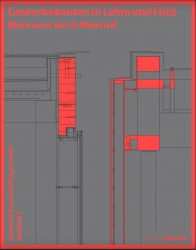 Author of the book review: Roman Schaurhofer, Vienna
The construction volume "Commercial Buildings in Clay and Wood - Added Value through Material" was published in 2020 by Sabine Djahanschah of the Deutsche Bundesstiftung Umwelt (German Federal Foundation for the Environment) at Verlag Detail. The publication, which appeared in book form, deals with the use of the building materials wood and clay in the construction of commercially used buildings. To this end, six buildings with commercial use were analysed in terms of their architectural construction and technical quality features and evaluated with the help of measurements, surveys and life cycle assessments.
Author of the book review: Roman Schaurhofer, Vienna
The construction volume "Commercial Buildings in Clay and Wood - Added Value through Material" was published in 2020 by Sabine Djahanschah of the Deutsche Bundesstiftung Umwelt (German Federal Foundation for the Environment) at Verlag Detail. The publication, which appeared in book form, deals with the use of the building materials wood and clay in the construction of commercially used buildings. To this end, six buildings with commercial use were analysed in terms of their architectural construction and technical quality features and evaluated with the help of measurements, surveys and life cycle assessments.
Explained in just under 10 min. The video is from April 2019 and shows two larger aquaponics facilities in Berlin.
 The new National Progress Report on the Implementation of the New Urban Agenda shows the state of sustainability in urban development in German municipalities. The report was prepared by the German Institute of Urban Affairs on behalf of the Federal Institute for Research on Building, Urban Affairs and Spatial Development (BBSR).
The new National Progress Report on the Implementation of the New Urban Agenda shows the state of sustainability in urban development in German municipalities. The report was prepared by the German Institute of Urban Affairs on behalf of the Federal Institute for Research on Building, Urban Affairs and Spatial Development (BBSR).
 In a recently written short study, scientists from the Department of Energy System Analysis at the Fraunhofer Institute for Solar Energy Systems ISE prepared an evaluation of the Market Master Data Register (MaStR) and the EEG system master data for photovoltaics (PV). Important findings of the analyses were that with 38 percent of the newly installed capacity, the increase in capacity in Germany is increasingly taking place in the segment of rooftop systems larger than 100 kW, 22 percent of the newly built PV systems are erected in a west, east or east-west direction and 19 percent of these systems have tilt angles smaller than 20 degrees.
In a recently written short study, scientists from the Department of Energy System Analysis at the Fraunhofer Institute for Solar Energy Systems ISE prepared an evaluation of the Market Master Data Register (MaStR) and the EEG system master data for photovoltaics (PV). Important findings of the analyses were that with 38 percent of the newly installed capacity, the increase in capacity in Germany is increasingly taking place in the segment of rooftop systems larger than 100 kW, 22 percent of the newly built PV systems are erected in a west, east or east-west direction and 19 percent of these systems have tilt angles smaller than 20 degrees.
This building group project with 43 residential units, some of them as maisonettes, was realized as a timber hybrid building and exemplifies the qualities of timber construction in a dense urban context.
Exploit potential at neighbourhood level!
The KfW programme "Energy-efficient urban refurbishment" promotes integrated energy-efficient neighbourhood concepts and refurbishment management with programme part 432. Programme parts 201 and 202 provide investment support for cross-building and infrastructural supply systems. The Federal Ministry of the Interior, for Building and the Home Affairs provides the funding for the energy refurbishment process from the individual building to the neighbourhood from the Energy and Climate Fund (EKF).The Special price on the topic "Urban development revisited: Prices - Practice - Perspectives" was given to the project Urban development area Stuttgarter Straße, French Quarter in Tübingen. The special prize, which is awarded in parallel to the urban development prize, serves to highlight particularly urgent fields of action in urban development and urban planning. It was awarded on 23.4.2021 on the occasion of the 40th anniversary of the German Urban Development Prize to contributions that had already been recognised with prizes and awards between 1980 and 2010. The judging of the special prize was very complex, as it had to cover a span of 30 years, i.e. a generation, of the achievements of German urban development that were considered outstanding at the time, and, in retrospect, it had to be based on robust, objective criteria that could adequately reflect the complexity of 30 years of urban development history and 30 years of urban development models.
 The prize is awarded every two years by the German Academy for Urban Development and Regional Planning (DASL) with significant support from the Wüstenrot Foundation. Urban Development Award in the DSP 2020 competition goes to the project Quarter at the former Blumengroßmark in Berlin. With 81 applications, a particularly large number of projects were submitted for the Urban Design Award. The spectrum was very broad: urban-structural-geographical, thematic, structural-spatial. From the new town hall in the urban planning context of a small municipality to the large conversion project of a metropolitan region, the interdisciplinary jury (urban planning, architecture, open space planning, preservation of historical monuments, economics, sociology) was faced with a very difficult decision in many cases.
The prize is awarded every two years by the German Academy for Urban Development and Regional Planning (DASL) with significant support from the Wüstenrot Foundation. Urban Development Award in the DSP 2020 competition goes to the project Quarter at the former Blumengroßmark in Berlin. With 81 applications, a particularly large number of projects were submitted for the Urban Design Award. The spectrum was very broad: urban-structural-geographical, thematic, structural-spatial. From the new town hall in the urban planning context of a small municipality to the large conversion project of a metropolitan region, the interdisciplinary jury (urban planning, architecture, open space planning, preservation of historical monuments, economics, sociology) was faced with a very difficult decision in many cases.
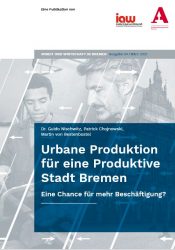 In a research project of the iaw, the conceptual foundations of urban production and the productive city were prepared with a view to the situation in Bremen and analysed in their impact structure. The study makes proposals for describing and recording urban production that is compatible with the city and embedding it in an urban development policy model of a productive city. On the basis of seven reference cities (Vienna, Zurich, Stuttgart, Hamburg, Frankfurt am Main, Wuppertal, Bochum), corresponding activities were filtered out and their transferability to the city of Bremen was examined. In the city of Bremen, eight locations and neighbourhoods (including the Tabakquartier and Kellogg-Areal) were examined with regard to their potential for implementing a productive city.
In a research project of the iaw, the conceptual foundations of urban production and the productive city were prepared with a view to the situation in Bremen and analysed in their impact structure. The study makes proposals for describing and recording urban production that is compatible with the city and embedding it in an urban development policy model of a productive city. On the basis of seven reference cities (Vienna, Zurich, Stuttgart, Hamburg, Frankfurt am Main, Wuppertal, Bochum), corresponding activities were filtered out and their transferability to the city of Bremen was examined. In the city of Bremen, eight locations and neighbourhoods (including the Tabakquartier and Kellogg-Areal) were examined with regard to their potential for implementing a productive city.
Animation from Jan Kamensky (2020)
In the video, the Munich timber housing estate "Prince Eugene Park" and the City of Wood in Bad Aibling. "Drought and bark beetles are causing severe problems for the forest. The resulting damaged timber has caused the price of wood to plummet. Local forest owners are making a loss, although the beetle wood is being exported thousands of kilometres to China and America as construction timber. What could be the solution to the timber shortage? And could more timber construction in our country also be a way out of the climate crisis?"
 "New large-scale construction projects and ecological innovations have ensured that Malmö is now a prime example of the direct transition from an industrial metropolis to a sustainable eco city. The secret recipe: the city not only relied on innovative technologies, but above all on the active participation of citizens in the transformation."
"New large-scale construction projects and ecological innovations have ensured that Malmö is now a prime example of the direct transition from an industrial metropolis to a sustainable eco city. The secret recipe: the city not only relied on innovative technologies, but above all on the active participation of citizens in the transformation."
A new study from Denmark takes a look at the costs of sustainable building construction and shows that more sustainable does not automatically mean more expensive. On the contrary. The study by Buus Consult on behalf of the DGNB system partner from Denmark, the Green Building Council Denmark, now provides clarity. In the study, it takes a close look at 37 DGNB-certified buildings.
 In the context of the Green Deal, the EU's tightened targets on the path to climate neutrality envisage a reduction in CO2 emissions of 55% by 2030 and 100% by 2050. Against the background of these tightened parameters, the question arises as to the impact on the energy transition in Germany. Based on its energy system model REMod, Fraunhofer ISE has calculated the consequences of the new EU targets for the expansion of renewable energies in Germany and now presents the results in a short study.
In the context of the Green Deal, the EU's tightened targets on the path to climate neutrality envisage a reduction in CO2 emissions of 55% by 2030 and 100% by 2050. Against the background of these tightened parameters, the question arises as to the impact on the energy transition in Germany. Based on its energy system model REMod, Fraunhofer ISE has calculated the consequences of the new EU targets for the expansion of renewable energies in Germany and now presents the results in a short study.






